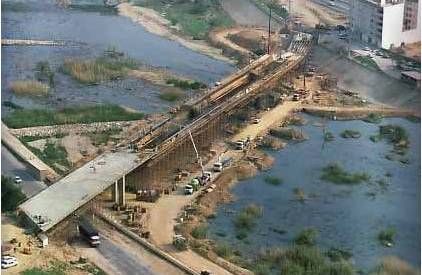 Acaban de publicarnos en la revista Journal of Building Engineering, que está en el primer decil del JCR, un artículo de revisión sobre la integración del proyecto estructural en BIM. El trabajo se enmarca dentro del proyecto de investigación HYDELIFE que dirijo como investigador principal en la Universitat Politècnica de València.
Acaban de publicarnos en la revista Journal of Building Engineering, que está en el primer decil del JCR, un artículo de revisión sobre la integración del proyecto estructural en BIM. El trabajo se enmarca dentro del proyecto de investigación HYDELIFE que dirijo como investigador principal en la Universitat Politècnica de València.
Podéis descargar el artículo gratuitamente al tratarse de una publicación en acceso abierto: https://www.sciencedirect.com/science/article/pii/S235271022200331X
La revolución hacia la Industria 4.0 en el sector AECO ha tomado como uno de sus puntos centrales el Building Information Modelling (BIM). Las capacidades de BIM para la automatización, la interoperabilidad y la sostenibilidad juegan un papel clave en este cambio. En este artículo se presenta una revisión bibliográfica sobre la adopción de BIM para el proyecto estructural. El objetivo de la revisión presentada es establecer el estado actual del conocimiento de la implementación de la metodología BIM en el campo del análisis estructural. Se han seleccionado trabajos relacionados con estos dos temas simultáneamente, BIM y análisis de estructuras, durante los últimos 10 años. La literatura se ha analizado desde dos enfoques diferentes. En primer lugar, se ha realizado un análisis bibliométrico, estudiando la producción sobre el tema. En segundo lugar, se han seleccionado y analizado 81 artículos representativos, estableciendo áreas temáticas a través del análisis de clúster. También se han clasificado los artículos a partir de varias categorizaciones basadas en el ciclo de vida estructural y su objetivo. Por último, se efectúa un análisis DAFO a partir de estos datos para crear un marco completo que muestre el estado de la integración del proyecto estructural en entornos BIM y los posibles desarrollos y riesgos futuros. Este conjunto de estudios muestra una tendencia hacia las herramientas de diseño y las nuevas construcciones. Mientras que la automatización y el diseño asistido por ordenador han sido una tendencia en la investigación durante varios años, se ha señalado una laguna en la investigación sobre el análisis estructural a través de BIM para los edificios existentes y del patrimonio, mostrando su capacidad para mejorar el análisis de los edificios existentes y su mantenimiento.
Highlights:
- The state-of-art of the integration of the structural project into BIM environments has been performed.
- A quantitative approach has been performed studying the scientific production of the topic.
- A qualitative analysis through proof-reading 81 articles relates the design phase and the agent involved in it to weigh the received attention.
- A cluster analysis on keywords of 81 articles reveal the trends in BIM research.
- Discussion through SWOT system reveals the different trends, weaknesses and further opportunities in the research area.
Abstract:
The revolution towards Industry 4.0 in the AECO Industry has taken Building Information Modelling (BIM) as one of its central points. BIM abilities for automatization, interoperability and sustainability play a key role in this change. In this paper, a literature review about BIM adoption for the structural project is presented. The aim of the presented review is to clearly establish the current state of knowledge of the implementation of the BIM methodology in the field of structural analysis. Papers related to these two topics simultaneously, BIM and structure analysis, during the last 10 years have been selected. The literature has been analysed from two different approaches. First, bibliometric analysis has been performed, studying the production on the topic. Secondly, 81 representative papers have been selected and analysed, establishing thematic areas via cluster analysis. The articles have also been classified upon several categorizations based on the structural life cycle and their aim. Finally, a SWOT analysis is performed from this data to create a complete framework that shows the state of the integration of the structural project in BIM environments and possible future developments and risks. This set of studies shows a tendency towards design tools and new buildings. While automatization and computer-aided design have been a trend in the research for several years, a research gap on the structural analysis via BIM for existing and heritage buildings has been pointed out, showing its ability to improve the analysis of existing buildings and its maintenance.
Keywords: BIM; Structural project; Building performance; Literature review; Life cycle
Referencia:
FERNÁNDEZ-MORA, V.; NAVARRO, I.J.; YEPES, V. (2022). Integration of the structural project into the BIM paradigm: a literature review. Journal of Building Engineering, 53:104318. DOI:10.1016/j.jobe.2022.104318.




